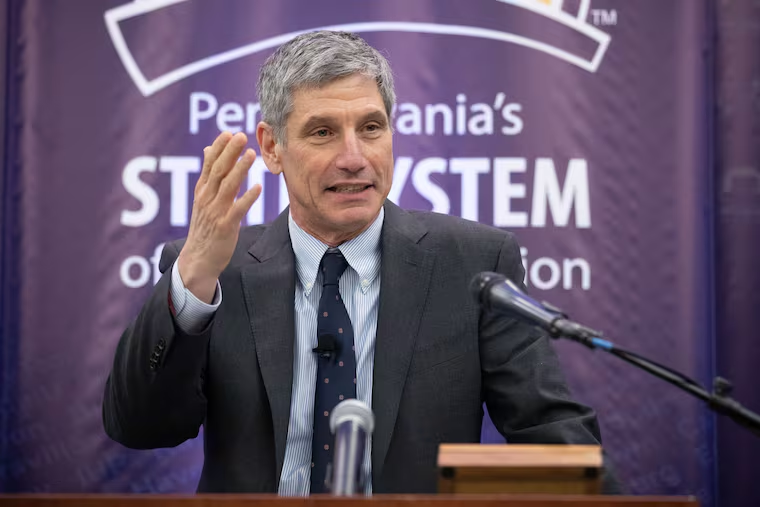The Pa. state university system has decided how to spend $75 million in stimulus funds and savings. West Chester will benefit.
The move comes one day after the board of governors voted unanimously to merge six of its 14 universities into two schools, the biggest change in the system’s 38-year history.

For several years, stronger universities in the Pennsylvania State System of Higher Education have been propping up weaker ones, due to a freeze in the system’s funding formula.
The system on Thursday agreed to use $7.3 million in savings from earlier borrowing to begin to remedy the situation. That will help stronger schools — including West Chester, Slippery Rock, Millersville, East Stroudsburg, and Bloomsburg — get closer to their true allotment under the formula. The system intentionally froze allocations in 2018-19 to help universities with more financial challenges until the system could undergo a redesign and universities could be placed on a more sustainable path.
» READ MORE: Board oks controversial plan to merge six universities into two
The move comes one day after the board of governors voted unanimously to merge six of its 14 universities into two schools, the biggest change in the system’s 38-year history. Officials had become increasingly worried about the drain on stronger universities and believe the integrations will help weaker schools improve.
“This is moving in the right direction of treating our institutions as part of the system more equitably,” said State Sen. Scott Martin (R., Lancaster), a member of the system’s board of governors.
But he also noted that the schools still aren’t being made whole — they’re actually short $14.6 million under the formula, and the system is restoring only half of that.
System officials said they plan to overhaul the funding formula and hope to have a new one by next year.
The savings being used are the result of a board decision in February to borrow $825 million to pay 75% of its financial obligations over the next 30 years to the State Employees Retirement System (SERS) in a one-time advance payment. That’s expected to result in an estimated $280 million cash influx to the system over the next three decades. Daniel Greenstein, system chancellor, said the system will have $25 million to begin using this year.
The system also outlined Thursday how it will use the rest of the savings, as well as $50 million in federal stimulus funds. The money is part of a $200 million commitment the state has made to the system over three years to help with its redesign.
» READ MORE: Pennsylvania plans to merge six universities. But some fear a 'slow death' for troubled schools
“The idea is to advance all of our universities so they can … position themselves to succeed,” Greenstein said.
The biggest chunks will be used to help Bloomsburg, Mansfield, Lock Haven, Clarion, California, and Edinboro — those being merged — integrate their operations, and to help all universities stabilize financially. An additional $10 million will be used for “essential infrastructure” that will allow, for example, students to more easily take courses at any of the system’s universities, and for the system to better market its schools.
The system will use $12.5 million to help alleviate debt at universities that have been eating through some reserves. Diversity, equity and inclusion, employee training, and emergency aid for students are among other initiatives, Greenstein said.
State Rep. Tim Briggs (D., Montgomery), a board member, said he’s grateful for the savings and new funds but said that won’t solve the larger funding problem.
“This isn’t sustainable if we don’t address our investment from the commonwealth,” Briggs said.
State Rep. Brad Roae (R., Erie) said K-12 funding typically gets the most attention from lawmakers.
“Higher education is almost an afterthought,” he said.
But, he said, more lawmakers are recognizing the system’s efforts to operate efficiently.
“I really do think in future years it’s going to be easier to have increases in state funding for the system,” he said. “The system is on the right road, and hopefully, the legislature, we can help out.”